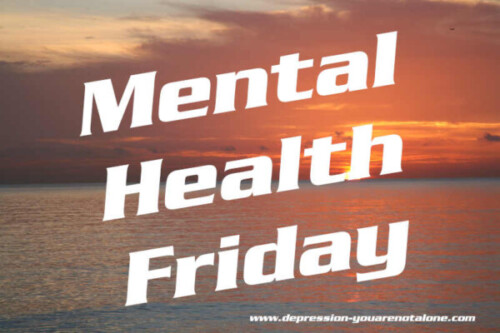Mental Health Friday 2023-07-07
On Mental Health Friday, we post, in alphabetical order, one per week, information on mental health disorders. Mental Health Friday is for informational purposes only, and is in no way meant to diagnose, treat or cure any disease. Please do not self diagnose and seek professional help for what ails you.
Link: FindTreatment.gov is an online source of information for persons seeking substance use and/or mental health treatment facilities in the United States or U.S. Territories.
Misophonia
By Editorial Team
Misophonia is a condition characterized by an intense emotional and physiological response to specific sounds. It is often referred to as a selective sound sensitivity syndrome or a sound-rage disorder. Individuals with misophonia experience an extreme aversion or hatred towards certain sounds, which can trigger strong negative reactions and distress.
The term “misophonia” was coined by audiologists Pawel and Margaret Jastreboff in 2000, combining the Greek words “miso” (hatred) and “phonia” (sound). It is important to note that misophonia is not a widely recognized disorder in the Diagnostic and Statistical Manual of Mental Disorders (DSM-5) or the International Classification of Diseases (ICD-11). However, it is gaining recognition among researchers and healthcare professionals as a genuine condition.
The hallmark of misophonia is the experience of intense anger, irritation, anxiety, or disgust in response to specific trigger sounds. These sounds are commonly related to human actions, such as eating, chewing, swallowing, lip-smacking, coughing, breathing, or repetitive noises like tapping, clicking, or sniffing. However, the triggers can vary from person to person, and each individual may have a unique set of sounds that provoke their symptoms.
When exposed to trigger sounds, individuals with misophonia often experience an immediate and involuntary “fight-or-flight” response. They may feel an overwhelming need to escape the situation or may respond with intense anger and frustration. Physical and emotional reactions can include increased heart rate, muscle tension, sweating, trembling, irritability, anxiety, and even panic attacks.
The exact cause of misophonia is still not fully understood, and research on the topic is ongoing. However, several theories have been proposed. One leading theory suggests that misophonia involves atypical processing of certain sounds in the brain, leading to an exaggerated emotional and autonomic response. This theory suggests that trigger sounds may be perceived as threats, activating the brain’s limbic system and the body’s stress response.
Misophonia often emerges in late childhood or early adolescence and tends to persist throughout a person’s lifetime. It can have a significant impact on daily life, causing social and occupational difficulties. Individuals with misophonia may avoid certain situations or places where trigger sounds are likely to occur, leading to isolation and reduced quality of life.
Currently, there is no standardized treatment for misophonia. However, some management strategies have shown promise in alleviating symptoms. These include cognitive-behavioral therapy (CBT), which aims to reframe negative thoughts and emotional reactions, and sound therapy techniques that involve the use of neutral or pleasant sounds to counteract trigger sounds. Other coping strategies may involve using earplugs or headphones, practicing relaxation techniques, and creating a supportive environment.
It’s worth noting that misophonia is a relatively new area of research, and there is still much to learn about its underlying mechanisms and effective treatments. If you or someone you know is experiencing symptoms of misophonia, it is recommended to consult with a healthcare professional, such as a psychologist or psychiatrist, who can provide a proper evaluation and guidance for managing the condition.

